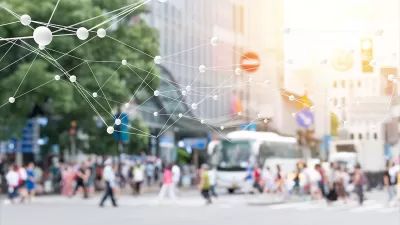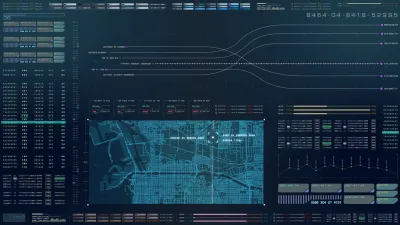Adie Tomer, of the Brookings Institution, writes about the role of artificial intelligence in the new digital age transforming cities.

The new industrial age of the digital era "represents an entirely new platform on top of which many everyday activities operate," according to a brief by Adie Tomer. One of the most important of the new developments of the new digital capabilities of cities is artificial intelligence (AI).
According to Tomer, there is a lot of interest and mystery surrounding AI, including just how AI will fit into the built environment. "Even though AI is still in its infant stages, we already encounter it on a daily basis," explains Tomer. "When your video conference shifts the microphone to pick up the speaker’s voice, when your smartphone automatically reroutes you around traffic, when your thermostat automatically lowers the air conditioning on a cool day—that’s all AI in action."
The bulk of Tomer's article discusses the potential for AI to address and mitigate some of the most pressing challenges facing cities, like climate change and urban resilience, growth and attraction of "tradable" industries, rising inequality, and more.
According to Tomer, there's no need to wait for AI to arrive in cities—it's already built into many day-to-day functions urban residents take for granted (the use of machine learning to better predict future bus arrivals for the mobile app Transit, for instance). But:
Continued experimentation with pilot AI projects and complementary policies are essential to build digital cities that benefit all people. But to deliver such shared prosperity, AI is only a secondary intervention. The first step is the same as it always was, no matter the technological era: Local leadership, from civic groups to elected officials to the business community, must collaborate to codify the shared challenges cities want technology to address. It’s only with a common sense of purpose that cities can tap AI’s full promise.
FULL STORY: Artificial intelligence in America’s digital city

Planetizen Federal Action Tracker
A weekly monitor of how Trump’s orders and actions are impacting planners and planning in America.

San Francisco's School District Spent $105M To Build Affordable Housing for Teachers — And That's Just the Beginning
SFUSD joins a growing list of school districts using their land holdings to address housing affordability challenges faced by their own employees.

Can We Please Give Communities the Design They Deserve?
Often an afterthought, graphic design impacts everything from how we navigate a city to how we feel about it. One designer argues: the people deserve better.

The EV “Charging Divide” Plaguing Rural America
With “the deck stacked” against rural areas, will the great electric American road trip ever be a reality?

Judge Halts Brooklyn Bike Lane Removal
Lawyers must prove the city was not acting “arbitrarily, capriciously, and illegally” in ordering the hasty removal.

Engineers Gave America's Roads an Almost Failing Grade — Why Aren't We Fixing Them?
With over a trillion dollars spent on roads that are still falling apart, advocates propose a new “fix it first” framework.
Urban Design for Planners 1: Software Tools
This six-course series explores essential urban design concepts using open source software and equips planners with the tools they need to participate fully in the urban design process.
Planning for Universal Design
Learn the tools for implementing Universal Design in planning regulations.
Borough of Carlisle
Smith Gee Studio
City of Camden Redevelopment Agency
City of Astoria
Transportation Research & Education Center (TREC) at Portland State University
City of Camden Redevelopment Agency
Municipality of Princeton (NJ)





























